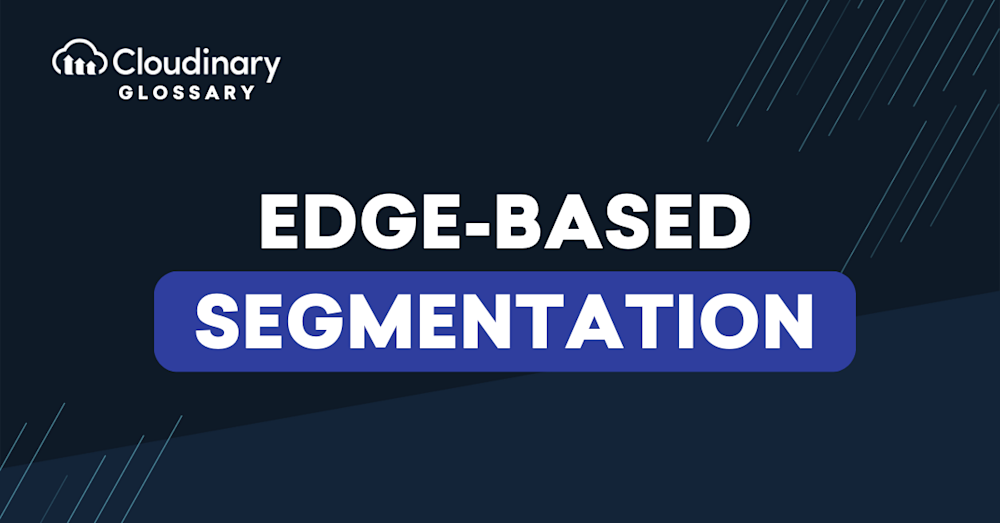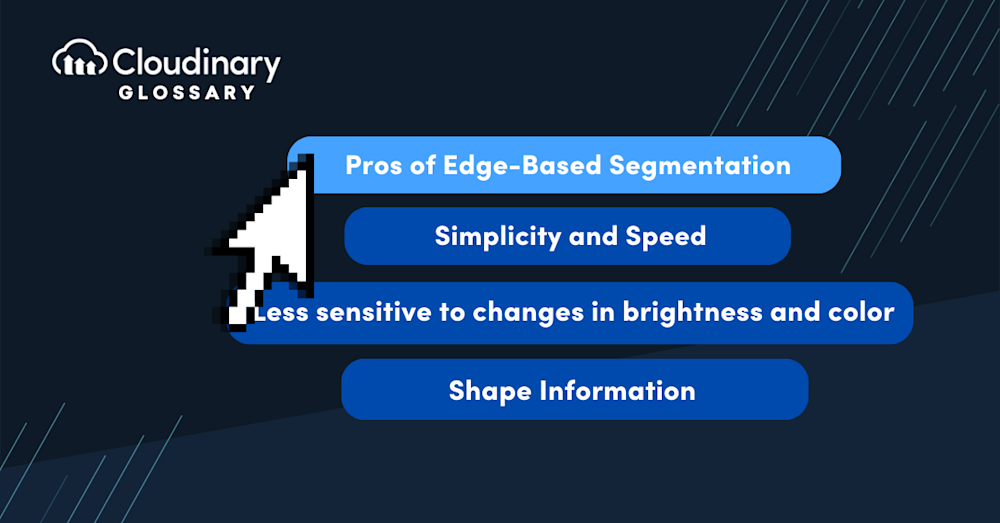What Is Edge-Based Segmentation?
Edge-based segmentation is used in image processing and computer vision to delineate objects within an image by identifying and analyzing the edges present. This method operates on the premise that the boundaries of objects in images typically correspond to sharp changes in intensity, color, or texture. At its core, edge-based segmentation relies on detecting these discontinuities and uses them as indicators to segment different objects or features from the background or each other.
To provide a tangible example, consider it like sketching the outlines in a coloring book before filling in the regions with color. Algorithms designed for edge detection scan the image to locate these transitions in the pixel grid, extracting a map of the edges. This map then serves as a guide, allowing the segmentation process to partition the image into segments based on these detected contours.
The success of edge-based segmentation depends on the quality of edge detection and the contrast within the image. This highlights the idea that while the technique is powerful, it can be challenged by pictures with low contrast or noisy conditions where edges are not clearly defined.
How Does Edge-Based Segmentation Work?
To better understand the inner workings of edge-based segmentation, let’s first grasp the concept of an edge. An image’s edge is a sudden variation in pixel intensity or color representing the boundary between different regions or objects. Starting with this foundation, edge-based segmentation algorithms follow a two-step process: edge detection and edge linking.
Edge Detection
In the first step, edge detection operators are employed to identify these rapid changes in the image’s pixel values. Various techniques exist for this purpose, such as the Canny, Sobel, Prewitt, and Scharr operators, each with their strengths and weaknesses. During this phase, the input image is typically filtered, and gradient or Laplacian-based approaches are used to highlight regions with high variations in intensity.
Edge Linking
Once edges have been detected, the next step is to connect and form continuous boundaries enclosing the objects of interest. Edge linking algorithms, such as the Hough Transform or contour tracing methods, join these fragmented edges into structures capable of defining the shapes in the image. This may sometimes involve closing gaps, removing noise, and refining the contours derived from the edge-detection phase. With the edges properly linked, the original image can be segmented into discrete regions based on these newly defined boundaries.
Pros and Cons of Edge-Based Segmentation
Like any technological technique, edge-based segmentation has distinct advantages and disadvantages, which can affect its utility in different imaging contexts.
Pros:
- Simplicity and Speed: Compared to other segmentation methods, edge-based segmentation is relatively straightforward and can be faster due to its fundamentally less computationally intensive operations.
- Shape Information: Since this technique focuses on edges, it tends to preserve the shape of objects better than other segmentation methods. This can be particularly valuable in applications such as biometrics and medical imaging, where accurately maintaining object shapes is crucial.
- Less sensitive to changes in brightness and color: The characteristics of edges rely more on changes in pixel values than their absolute values, making edge-based methods less sensitive to variations in illumination or color.
Cons:
- Dependent on Quality of Edges: Edge-based segmentation heavily hinges on the quality of edge detection. Any inaccuracies at this stage can lead to incomplete or erroneous segmentation.
- Affected by Noise: Noisy images can yield false edges, leading to incorrect segmentation. Preprocessing to reduce noise becomes necessary, adding to the complexity.
- Difficulty handling textural images: Images with complex textures can pose a challenge, as the intensity changes within textures can also be identified as edges, resulting in over-segmentation.
Final Thoughts
Edge-based segmentation is a critical tool in the expanding toolbox of image processing techniques. Its capacity to parse through visual data and discern objects by their outlines empowers developers to tackle many challenges—from automating complex tasks in computer vision applications to enhancing the experience in user interfaces and beyond. With careful implementation, preprocessing, and algorithm selection tailored to the specific requirements of a project, edge-based segmentation can significantly elevate the quality and precision of image analysis tasks.
Embrace the power of edge-based segmentation and more as you tap into Cloudinary’s dynamic offerings—where functionality meets innovation. To truly harness your images’ full potential and supercharge your projects, explore Cloudinary today. Let’s shape the future of digital imaging together.
Additional Resources You May Find Useful:




